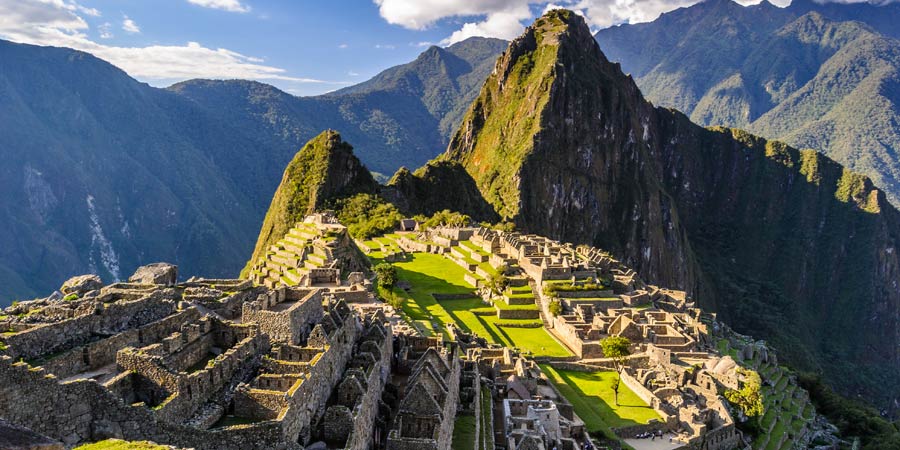There are some destinations across the world which are so iconic, so magnificent and so well-known that they truly earned the often-overused title of once-in-a-lifetime destinations. These natural wonders, man-made masterpieces and ancient marvels have etched themselves into the global conscience in such a way that they will never be forgotten. Here are some of our favourites, listed in no particular order.
The Grand Canyon
227 miles long, 1,800 metres deep and hundreds of millions of years old - the Grand Canyon is one of the seven natural wonders of the world and one of its most striking monuments. Found in the state of Colorado, and one of the USA's national parks, the Grand Canyon is a stark reminder of the immensity and sheer power of nature. Countless unseen natural influences have shaped every curve, every cliff and every rock of this glorious gorge, and it presence has become meshed with America's cultural identity, attracting thousands of visitors every year.
Machu Picchu
Like the pyramids of Egypt, what truly makes Machu Picchu exceptional is the ingenuity and manpower which must have gone into its creation. A stone estate built on behalf of Emperor Pachacuti around the 15th century at the height of the Incan Empire, the intricate stonework and its position atop Huayna Picchu must have made construction truly difficult. Many of the outer buildings are in excellent condition for their age, but it is the spectacular surroundings of mist-drenched green mountains rising above low cloud which makes Machu Picchu a once-in-a-lifetime destination.
Angkor Wat
The accolade of being the largest religious building in the world is quite the achievement and it is not a surprise that Angkor Wat takes this prestigious title. This massive Cambodian collection of temples, is dedicated to the Hindu religion and is over 162 hectares in size, featuring various ancient buildings in honour of various gods. Impressive stonework is in abundance, with intricate decorations making up different faces and deities. The advanced complex indicates the hand of a progressive civilisation, with the various shrines all connected to a well-engineered water system. Stepping across the bridge into the Angkor complex is very much a step back in time to the enormous power of the Khmer empire across the last millennium.
Victoria Falls
One of the largest waterfalls and one of the most impressive sights on the planet, the Victoria Falls is astonishing both in its beauty and crashing power. Located in Zimbabwe, Africa, these magnificent falls were the subject of a famous discovery by Scottish explorer David Livingstone. In his mission to discover the hitherto unknown source of the Nile River, Livingston came across the waterfalls which he christened the Victoria Falls in honour of his queen, Queen Victoria of the British Empire. His words to describe what he saw are better than anything anyone else could put down: 'No one can imagine the beauty of the view from anything witnessed in England. It had never been seen before by European eyes; but scenes so lovely must have been gazed upon by angels in their flight'.
The Great Wall of China
Stretching across the border of one of the largest nations on earth, the Great Wall of China certainly lives up to its title. Originally over 13,000 miles long, this mind-boggling structure was built by Emperor Qin Shi Huang to begin with, the same Emperor who was buried along with his famous guard of over 8,000 terracotta soldiers. Sections of the Great Wall of China were added later by members of the Ming Dynasty. The wall itself, which was designed to keep out the Steppe nomads of Eurasia, is in marvellous condition, and the scale of these walls is breathtaking as they seem to stretch on and on across the horizon. They cannot, however, be seen from outer space. This was in fact, an exaggerated myth spread by English visitors during the 18th and 19th centuries.
The Taj Mahal
India's finest building, located near the city of Agra, the Taj Mahal is an architectural delight. Its onion dome, framed by four minarets on each side and preceded by a long stretch of fountains and grass is picture perfect, even more so with the rise and fall of the sun. Designed as a mosque and as a mausoleum for the favourite wife of a 17th century Mughal emperor, the Taj Mahal is a triumph of Islamic design and a delight for millions of visitors every year. It has rapidly become a symbol of India, enthralling travellers from across the globe with its ivory-white walls and reverent interiors. It is considered one of the new seven wonders of the world.
Mount Fuji
Few mountains have cast such a cultural shadow as that of Mount Fuji in Japan. Almost perfect, as if some unseen hand had pulled it up and crafted it from the landscape, Mount Fuji watches over Honshu Island from all of 12,389 feet, an ancient guardian and one of Japan's Three Holy Mountains. This natural marvel is an active stratovolcano, and its near-symmetrical shape and its snow lined summit make it exceptionally pleasing on the eye. Mount Fuji is best visited in spring, as the cherry blossom blooms on the trees, casting a peaceful pink hue on central Japan.




